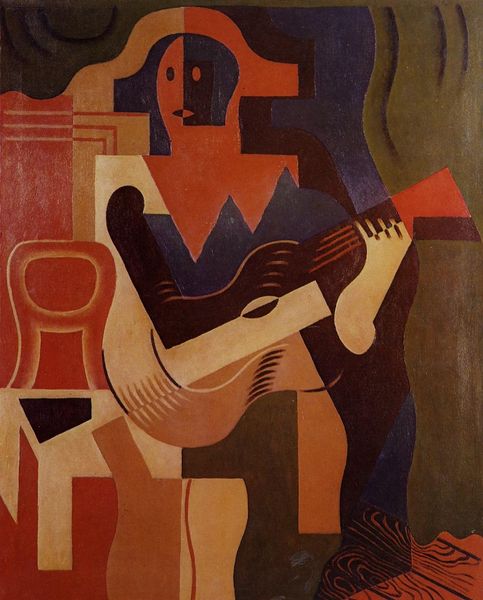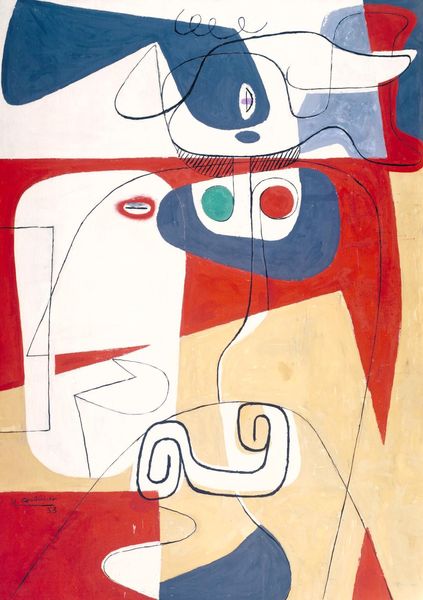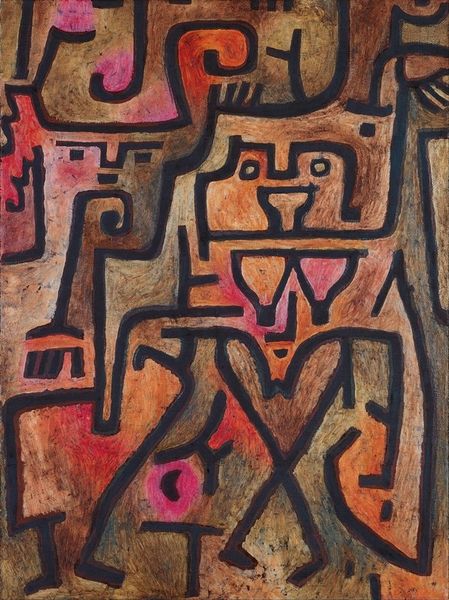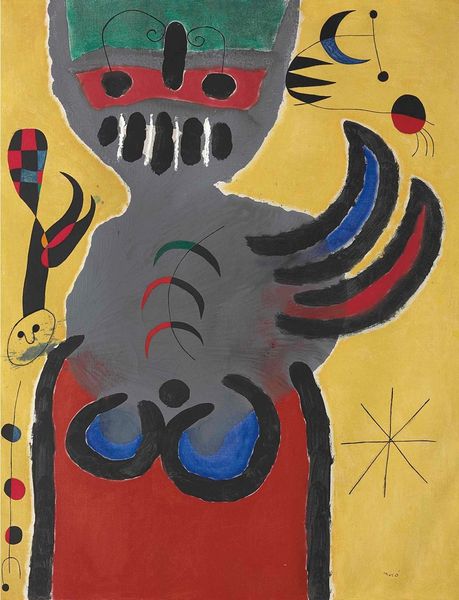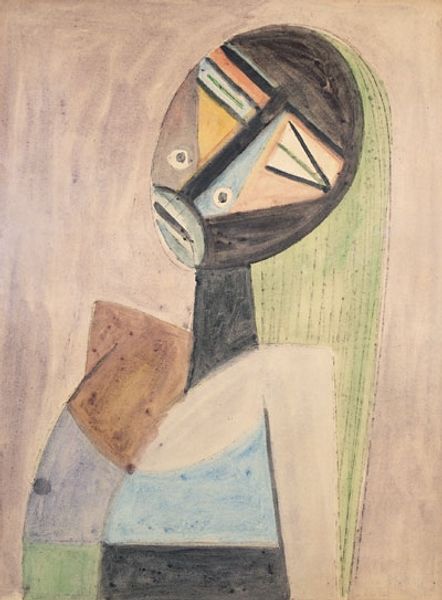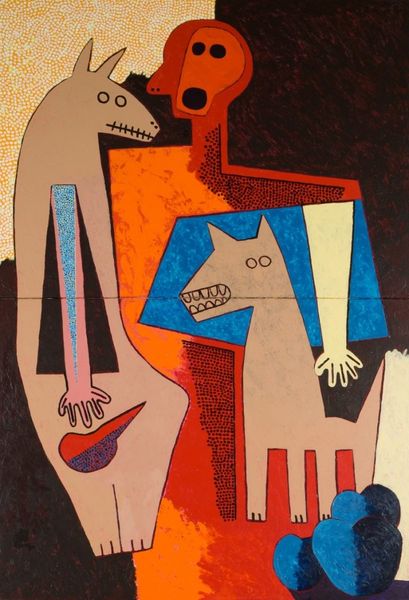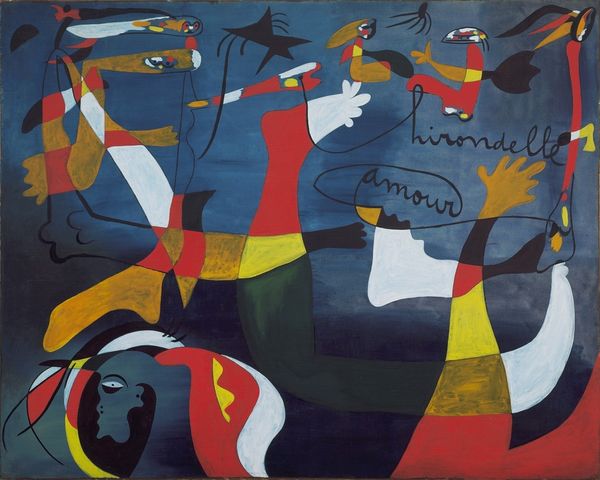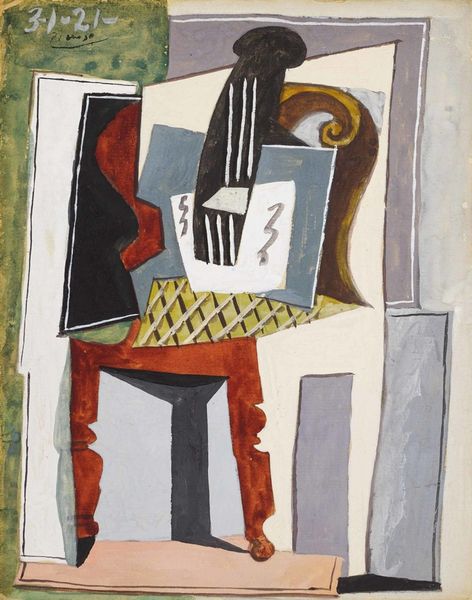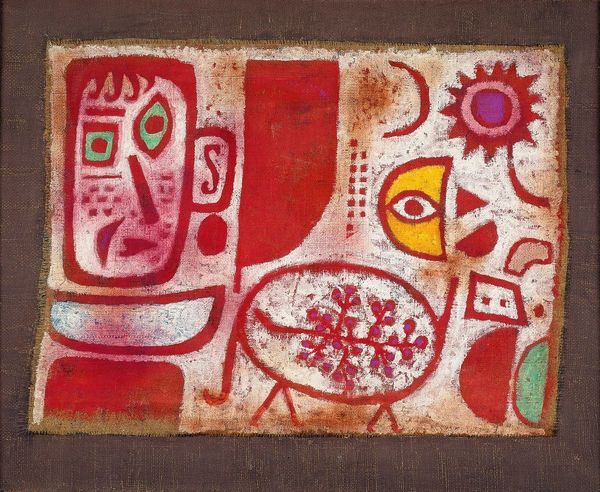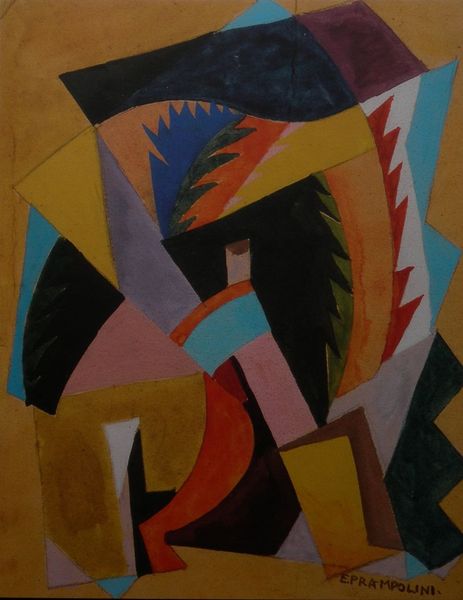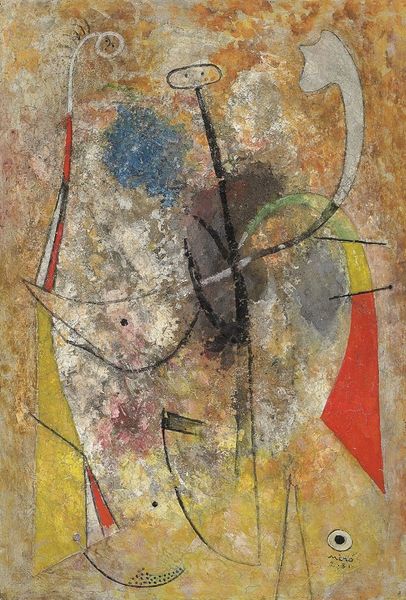
painting, watercolor
#
cubism
#
painting
#
figuration
#
abstract
#
watercolor
#
geometric
#
expressionism
#
line
Copyright: Public Domain: Artvee
Editor: Here we have Paul Klee's "Lovers," created in 1920, using watercolor. The longer I look, the more I'm struck by its rather blocky depiction of human forms. What do you make of it? Curator: Klee, working in the Weimar era, a period of immense social upheaval in Germany, engaged in a very interesting visual dialogue with prevailing societal anxieties and utopian yearnings. Consider how the fragmented, almost architectural forms you observe might reflect the fractured social landscape of postwar Europe. Does this influence your interpretation? Editor: It does a bit, but the colours are so warm. Doesn't that clash a bit with a message of societal fracture? Curator: That's a great point! And exactly the type of tensions that make Klee’s work so intriguing. Think about how he displays these potentially violent aesthetic clashes. How did institutions react? What shows was it in? Knowing that information will allow us to place this artwork in history. And with that in mind, how might museums in particular have used or perhaps misused these artworks to define modern identity at the time? Editor: Wow. I guess I'd never considered the relationship between warm colors and societal fractures as part of the art's commentary on early 20th century politics. This definitely encourages a different perspective, particularly thinking about the history of display this watercolor faced. Curator: Exactly! By thinking about these aspects, you start to peel away the layers and discover a new dimension of artistic engagement with the world around them. And how galleries presented it! It truly takes on a life of its own. Editor: Absolutely. Thanks for illuminating those aspects! I'll never look at Klee the same way again.
Comments
No comments
Be the first to comment and join the conversation on the ultimate creative platform.

